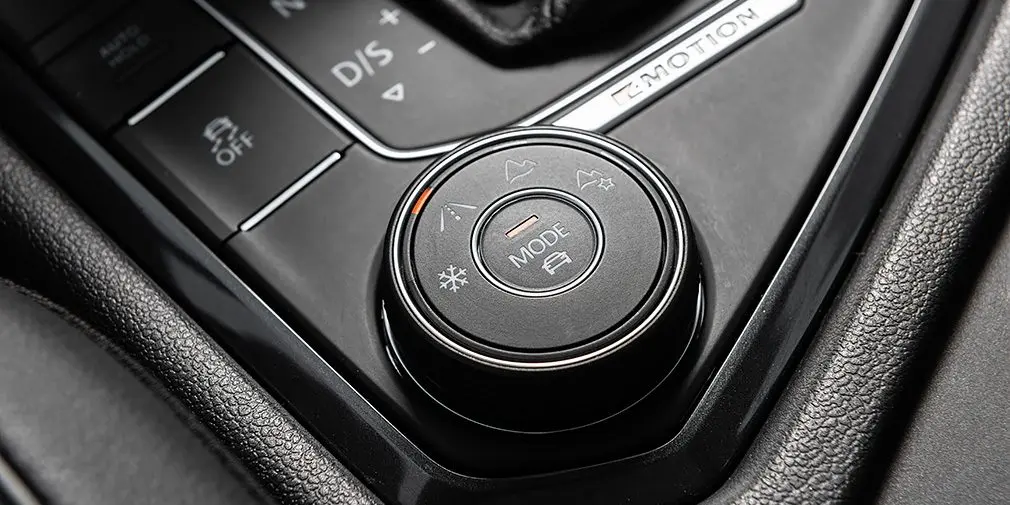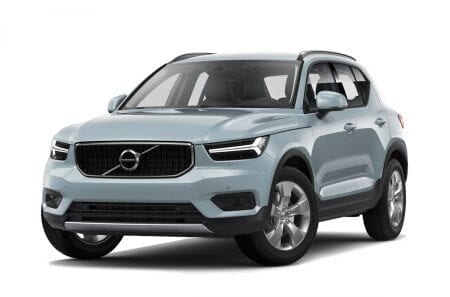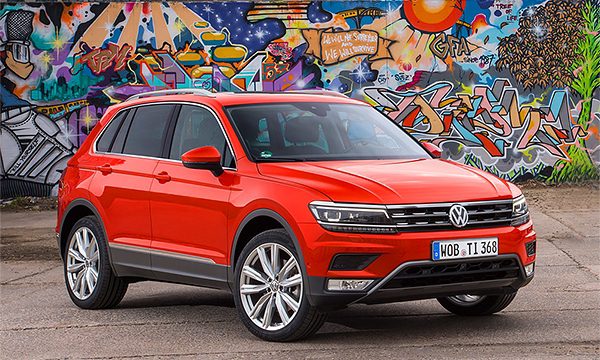
Test drive the new VW Tiguan
The off-road capabilities of the new crossover were not used in the vicinity of Berlin - they had to build a special track using heavy equipment for several weeks
Crossing the street in Berlin turned out to be another task - all the markings were removed. However, pedestrians have somehow learned to coexist with drivers and do not interfere with each other. So the ability of the new Tiguan to detect dangerous moving objects, as well as an active hood, which minimizes the consequences of a collision, risk being left unclaimed. As well as off-road capabilities - they cannot be used in the vicinity of Berlin. The organizers of the test drive even had to build a special track using heavy equipment for several weeks.
The Tiguan, introduced in 2007, was VW's first foray into the compact crossover segment, and its name - a hybrid of "tiger" and "iguana" - emphasized the unusualness of the new model. At the time, Tiguan-like cars were still new, and Nissan had just launched the Qashqai. Since then, the German crossover has sold almost three million copies and still occupies a fairly serious position in key markets: in Europe it is second only to the Qashqai, and in China it holds the title of the most popular foreign crossover in the compact class. But against the background of new and bright competitors, the car is lost - it looked quite modest before, but restyling did not correct the situation.
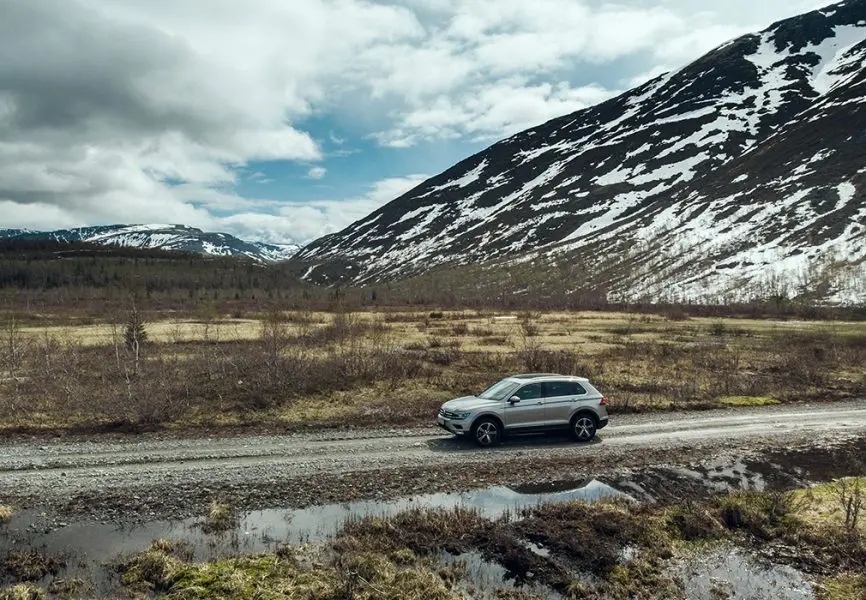
This is probably why the new Tiguan turned out to be too bright for Volkswagen. Sharp edges drawn with a thick lead, whimsical relief of the radiator grille, clumsy jewelry of hefty headlights with LED crystals - if the eye glides along the body of the old Tiguan without encountering resistance, then in the case of the new one it involuntarily gets stuck on details and contradictions.
Familiar proportions are violated: the front part spreads out in breadth, and the feed cut from the sides by deep furrows narrows towards the top. If you approach a car with a ruler, it turns out that it has become a little longer, a little wider and at the same time lower. Moreover, for the sake of lowering the roof line, there was no need to sacrifice internal dimensions - the headroom above the passengers' heads even increased, albeit by a few millimeters.
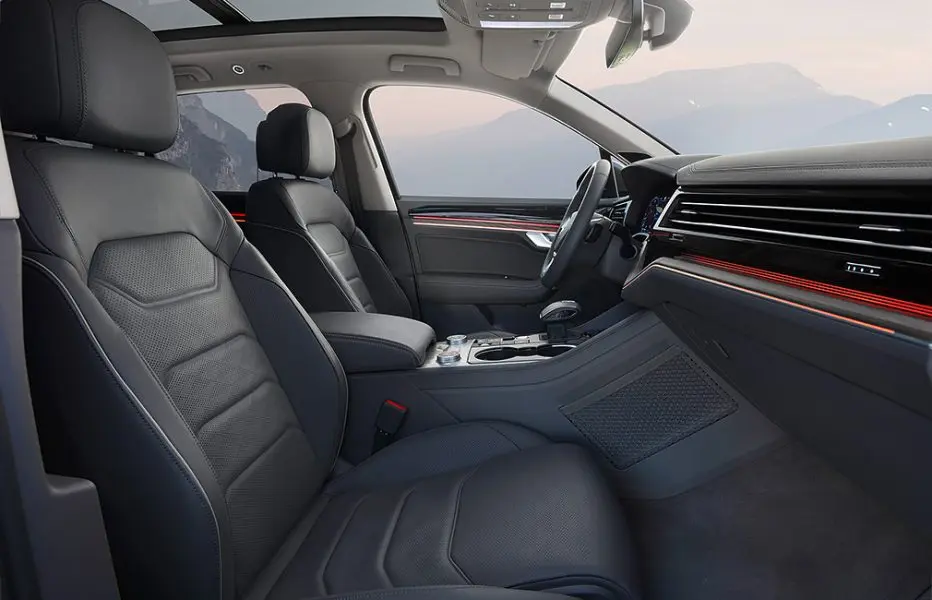
The car looks massive, impressive - like Touareg, only small. The modular MQB platform allowed to reduce the weight of the car by fifty kilograms, and the center distance increased by 77 mm - now, in terms of wheelbase (2681 mm), the new Tiguan surpasses such large crossovers as Toyota RAV4, Kia Sportage, Hyundai Tucson and Mitsubishi Outlander. The pedantic Germans thought that the margin between the back of the front seat and the knees increased by 29 mm, but they could lie - it feels like the new Tiguan seems much more spacious. There will be a need to expand the table - the chair will have to be moved closer to it, fortunately, there is such an opportunity. The increased interior width is not so noticeable due to the bulky central tunnel.
The trunk gained more from the increase in the wheelbase: 520 liters - plus 50 to the volume of the predecessor - this is a serious application in the class, and if you move the rear seats as close to the front ones as possible, you get all 615 liters, but in this case the Tiguan will be a two-seater. With the backs folded down, a compartment with a volume of more than 1600 liters is obtained, and if 1,75 m in depth is not enough, you can put the back of the front seat in the horizon. The loading height was reduced, and the opening of the fifth door was made larger without compromising the rigidity of the body - primarily due to the new MQB platform and the widespread use of high-strength steels.
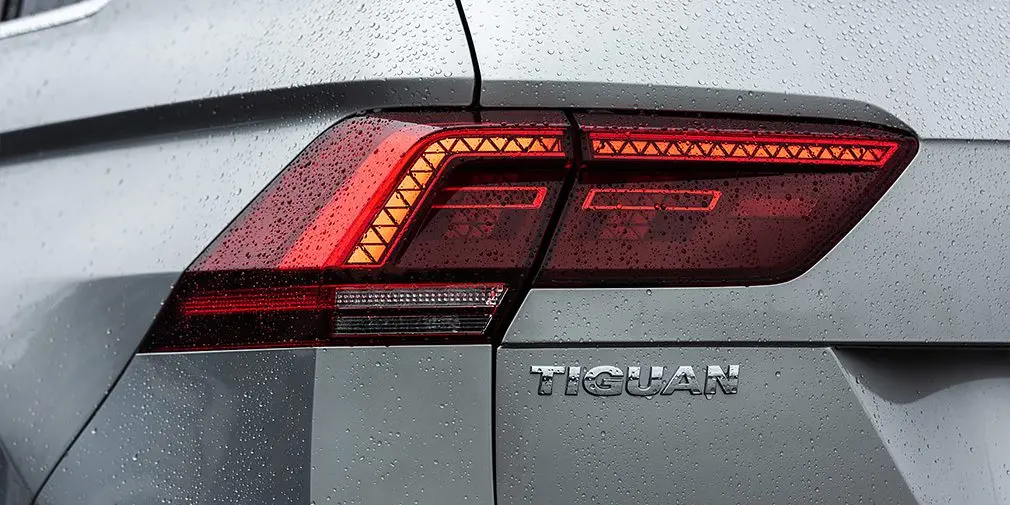
In the previous interior, only two-story deflectors were remembered - until recently, boredom was elevated to a stylistic device. You look at the interior of the new Tiguan and doubt whether it turned out too boldly - as if it were not a Volkswagen, but some kind of Seat. Why Seat, the Spanish crossover Alteca on the same platform is designed in a more relaxed way - both inside and out.
Whatever delights the designers offer, they will not cross the line beyond which practicality begins. In this VW has remained true to itself. The buttons and knobs are located in the expected places so the beginner won't get lost. New is the ingeniously simple adjustment of the projection display's data in height with a single knob.
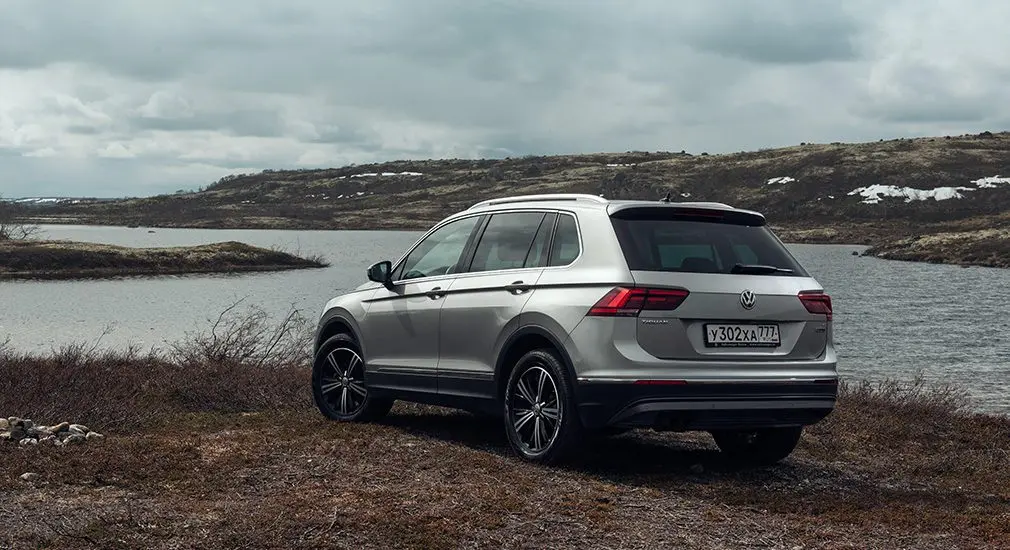
The new Tiguan is aimed at a youth audience who prefers technology to the comfort of slippers, and will definitely appreciate such a trifle as a USB connector for second-row passengers. The multimedia system readily responds to the touch of a finger on the screen and easily connects to a smartphone. The dashboard for an extra charge can be virtual, like on new Audi, and there are a lot of options for its customization. In fact, this is a full-fledged display: the dials can be reduced, and most of it can be given for navigation.
In angular lines and sparingly scattered buttons on the panel, there is little comfort. Soft plastic reluctantly yields to finger pressure, and the seats with new springs and filler are harsh. But at the same time, it became much quieter inside.
The enthusiasm is felt even in the adaptive cruise control settings - the crossover picks up speed sharply and suddenly, as if at the last moment, stops, clearly testing the effectiveness of the brakes.
Switching modes with the button was preserved only in front-wheel drive cars with "mechanics", and in all-wheel drive cars there was a special washer - it is also responsible for changing road and off-road settings. Eco-friendly and individual have been added to the three driving modes Comfort, Normal and Sport - with the help of the latter, you can change many parameters, ranging from accelerator sensitivity and steering effort, ending with cornering lights and the intensity of the climate system. Driving settings for snow and ice can be selected separately.
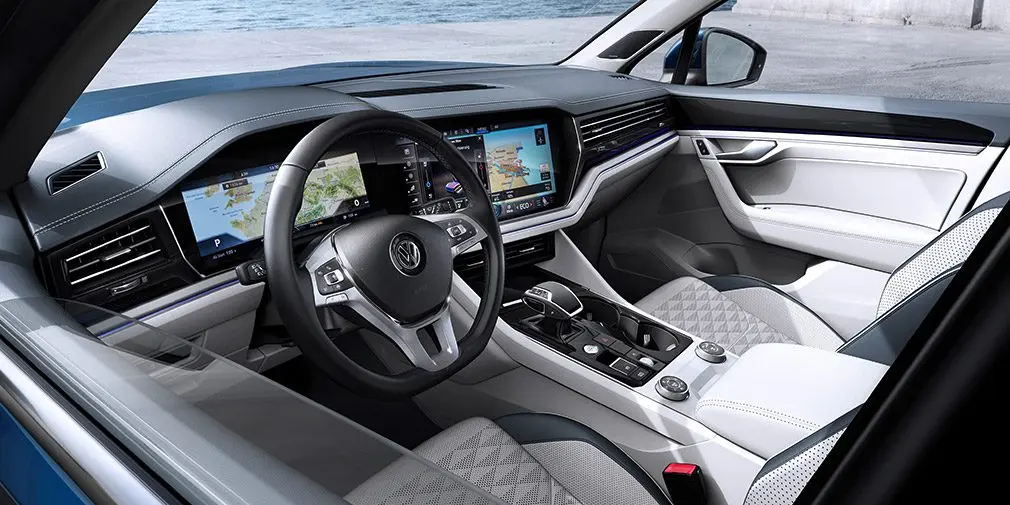
The diesel crossover on 18-inch disks rides tightly even in comfortable mode, but does not convey road trifles as much as the previous generation car. In general, the differences between the suspension modes of the diesel "Tiguan" are small - on a straight and level road every now and then you spy on a hint on the display. At high speed, the difference is palpable - after 160 km / h the car starts to dance in a comfortable mode, and in a sport mode it stands like a glove. There are more differences in the behavior of a gasoline SUV, and in "comfort", even despite the 20-inch wheels, it seems more relaxed. With a gasoline engine, the seven-speed robotic gearbox works smoother, but its hoarse voice is clearly distinguishable, while the diesel is quiet and is audible only during acceleration.
Tiguan on "mechanics" easily makes a fool of me: I try to get under way - I go deaf. And every time start / stop again helpfully starts the engine. A colleague grins: he does not know yet that he will stall in the same way after a while in a Berlin traffic jam. Long and sluggish throttle combined with a clutch that grips at the end of the pedal travel is a tandem so-so. And the motor on the "bottom" is inanimate - the merit of "dieselgate". This version spoiled the impression of the new car a little, but in general, the second generation Tiguan seems to be a more expensive car, both in terms of equipment and driving habits.
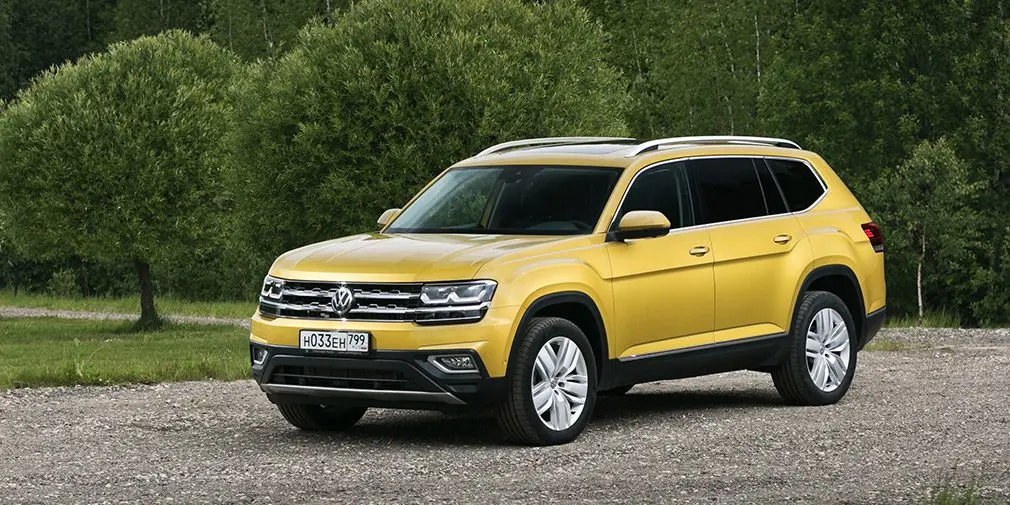
The new Tiguan continues to be offered in two versions. "City" became closer to the ground (the ground clearance is now 190 mm), and its cross-country ability has slightly deteriorated - the angle of entry is 17 degrees. The off-road Tiguan retains its 200mm clearance and trimmed front bumper. But it also lost a little in geometric cross-country ability - the approach angle is now 25,6 degrees against 26,8 earlier.
The off-road track, built for testing the new car, turned out to be quite simple - the organizers even feared that journalists might dig it up. At the same time, she demonstrated that the off-road electronics of the new car works much better. The fifth-generation Haldex clutch instantly transfers the moment to the rear axle, the brakes in off-road mode quickly bite the suspended wheels, the downhill assist works smoothly - in this case, the vehicle speed is controlled by the brake pedal. The circular view system also helps out great, and you can display not only a top view, but also an unusual 3D model. A picture from two side cameras simultaneously is convenient when you need to drive along narrow walkways.
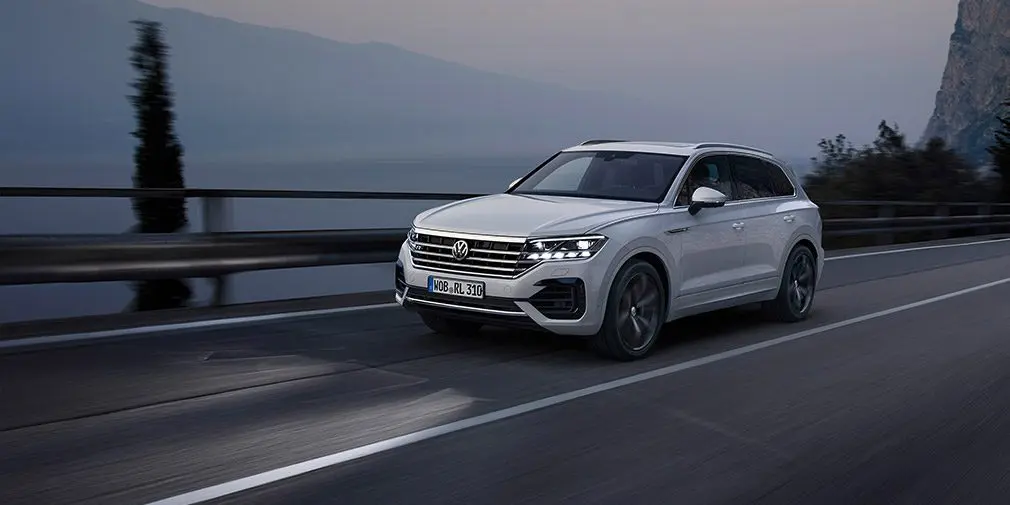
"Gas" in the off-road mode is damped, and the shock absorbers are soft enough to ride comfortably off-road and not hit the bottom of the obstacle with a swing. The compass and the angle of rotation of the front wheels, which are automatically displayed on the dashboard, look already overkill. As well as the individual off-road mode, in which many parameters can be changed, it is only unclear why this should be done. For example, turning off the hill descent assist or making the suspension softer, which will increase the buildup off-road. The Tiguan is already doing pretty well in regular off-road mode, so this whole impressive array of electronic features is more of an entertainment nature.
The new Tiguan has fewer chances to visit protected areas and meet serious off-road conditions, but the sum of its abilities will be enough to explore new territories. The eye-catching design with many striking details must be appreciated outside of Europe. Especially for the United States, an extended seven-seater version with an “automatic” instead of a robotic box will be offered. In addition, a coupe car will also appear in the new crossover family.
The new Tiguan will arrive in Russia only in the first quarter of 2017. While this is an equation with several unknowns: it has not yet been decided whether it will be produced in Kaluga, there are not even preliminary calculations on the price, only the understanding that the new crossover will be more expensive than the current one. Perhaps for this reason, VW is not abandoning the production of the first generation Tiguan, and the cars will be sold in Russia in parallel for some time.
